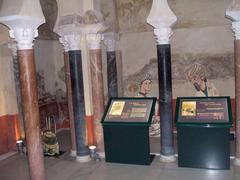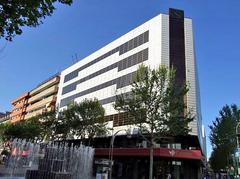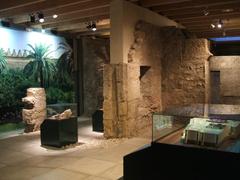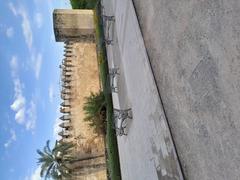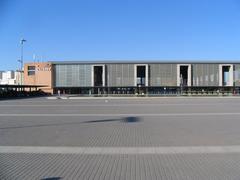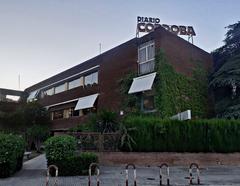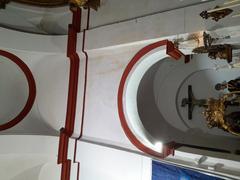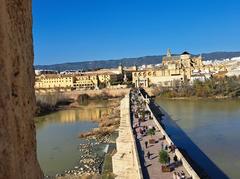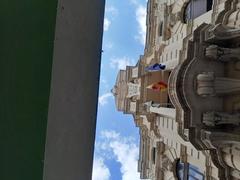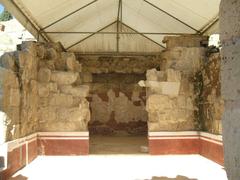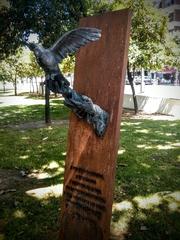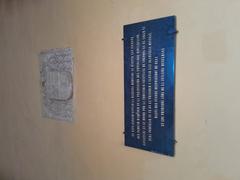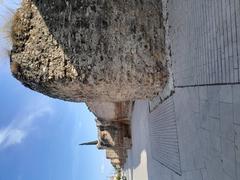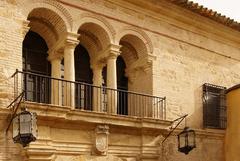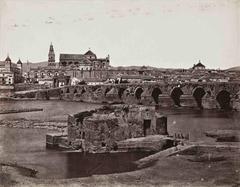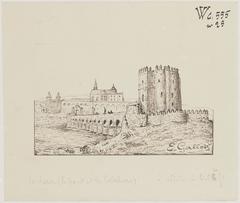Castillo de la Isabela: Visiting Hours, Tickets, and Historical Sites in Córdoba, Spain
Date: 14/06/2025
Introduction
Castillo de la Isabela stands as a unique testament to Córdoba’s layered history, blending medieval roots, romantic 19th-century architecture, and the region’s Moorish and Christian influences. Overlooking the Guadalquivir River and located near the city’s historic center and the district of Alcolea, the castle invites visitors to step into Andalusia’s multifaceted past. This guide offers detailed information on visiting hours, ticketing, accessibility, architectural highlights, and practical travel tips, ensuring you can plan and enjoy a memorable visit to one of Córdoba’s lesser-known yet captivating historical sites (Nomads Travel Guide, Spain Traveller, Turismo de Córdoba).
Table of Contents
- Introduction
- Historical Overview
- Current State and Conservation
- Visitor Information
- Nearby Attractions
- Frequently Asked Questions (FAQ)
- Visuals and Media Suggestions
- Summary & Call to Action
- References
Historical Overview
Origins and Strategic Importance
While Córdoba is celebrated for its Roman, Islamic, and Christian monuments, Castillo de la Isabela occupies a distinctive place in the city’s defensive and administrative history. Early references suggest the site may have had strategic value since antiquity, but its most significant historical chapter began during the late medieval period, as Christian forces consolidated power following the Reconquista (Nomads Travel Guide). Elevated above the Guadalquivir, the location offered commanding views and control over the vital river corridor.
19th-Century Construction and Romanticism
The current structure of Castillo de la Isabela is a product of romantic historicism in the 19th century. Commissioned in 1871 by Don Ricardo Martel y Fernández de Córdoba, Count of Torres Cabrera, it was designed as a palatial residence within the Colonia de Santa Isabel (Lista Roja Hispania Nostra). The castle’s construction began with a ceremonial laying of the first stone on October 24, 1871, embedding a commemorative parchment in its main tower’s foundation. Unlike purely military fortresses, this castle was intended to symbolize lineage and evoke the grandeur of medieval Andalusia.
Architectural Features
Castillo de la Isabela is an eclectic fusion of Moorish and Gothic styles. Characteristic features include:
- Moorish Influence: Horseshoe arches, intricate tilework, and decorative stonework reflect Córdoba’s Islamic heritage.
- Gothic Elements: Pointed arches, ribbed vaults, battlements, and machicolations enhance its medieval aesthetic, though often for symbolic rather than functional purposes (Castlepedia).
- Military-Inspired Design: The castle boasts a dominant central tower, crenellated walls, and solid stone masonry to evoke the look of a fortress.
- Interior Spaces: Though many decorative features have been lost to neglect and vandalism, remnants of azulejos (Andalusian tiles), stained glass, and heraldic motifs remain. Courtyards and gardens were designed for private gatherings and once contrasted beautifully with the fortress’s austere appearance.
Current State and Conservation
Despite abandonment and vandalism, the main structure’s robust construction has endured. Many decorative elements have been damaged or stolen, and sections of the interior suffer from structural instability. Castillo de la Isabela is listed on Spain’s “Lista Roja” of endangered heritage sites and requires urgent conservation to prevent further decay (Lista Roja Hispania Nostra). Restoration efforts are ongoing, but access is limited due to safety concerns.
Visitor Information
Location & Accessibility
- Location: Near Alcolea, approximately 10 km from Córdoba city center, set within the Barriada de los Ángeles.
- Access: Best reached by car or taxi; public transport options are limited. Parking is informal and limited on site.
- Accessibility: The grounds are uneven and overgrown, and the interior may be unsafe. The site is not currently accessible for visitors with mobility impairments.
Visiting Hours & Tickets
- Current Status: Castillo de la Isabela is not officially open to the public due to its deteriorated condition and ongoing conservation work. Access may be restricted or prohibited; always respect posted signs and barriers.
- Tickets: There is no formal ticketing system at this time. Any visits must be coordinated with local authorities or through special guided tours organized by heritage groups.
On-Site Experience & Amenities
- Exploration: Visitors may admire the castle’s silhouette from public roads and nearby viewpoints. Panoramic views of Córdoba and the Sierra Morena are possible from the area.
- Amenities: No restrooms, food services, or gift shops are currently available on site. Bring water and wear sturdy footwear.
- Photography: The site offers excellent opportunities for exterior photography. Drones and interior access are not permitted without special authorization.
Tips for a Safe and Memorable Visit
- Verify the latest access status with Turismo de Córdoba or local tourism offices before visiting.
- Respect all safety barriers and do not attempt to enter closed or unstable areas.
- If you wish to support conservation, consider joining or donating to local heritage organizations.
Nearby Attractions
Córdoba offers a wealth of historic sites easily combined with a visit to Castillo de la Isabela:
- Mezquita-Catedral de Córdoba: The city’s iconic mosque-cathedral.
- Alcázar de los Reyes Cristianos: A medieval fortress with lush gardens.
- Jewish Quarter (Judería): Labyrinthine streets with centuries of history.
- Puente Romano (Roman Bridge): Spanning the Guadalquivir with dramatic views.
During May, the Fiesta de los Patios transforms Córdoba with flower-filled courtyards and city-wide celebrations.
Frequently Asked Questions (FAQ)
Q: Can I visit Castillo de la Isabela today?
A: The castle is currently closed to the public for safety and conservation reasons. Contact local tourism offices for updates.
Q: Are there entrance fees or tickets?
A: No ticketing system exists at present. Any access must be arranged through official channels or special tours.
Q: Is the site accessible for people with disabilities?
A: No. The terrain and building conditions do not currently allow for accessible visits.
Q: How do I get to Castillo de la Isabela from Córdoba city center?
A: The castle is about 10 km from the center; driving or taking a taxi is recommended.
Q: What other historical sites should I visit nearby?
A: Mezquita-Catedral, Alcázar de los Reyes Cristianos, the Jewish Quarter, and the Roman Bridge are all major attractions in central Córdoba.
Visuals and Media Suggestions
- Use optimized images with descriptive alt text, such as “Castillo de la Isabela panoramic view” or “Córdoba historical sites architecture.”
- Embed an interactive map showing the castle’s location relative to other Córdoba landmarks.
- Link to virtual tours or 360-degree videos if available via official tourism resources.
Summary & Call to Action
Castillo de la Isabela is a distinctive landmark reflecting both medieval strategic significance and 19th-century romantic ideals. While not currently accessible to the public due to its endangered status, the castle remains a symbol of Córdoba’s layered history and the ongoing challenges of heritage conservation. For up-to-date visitor information, always consult official tourism sites and consider participating in cultural events or supporting restoration efforts.
Make the most of your trip by exploring nearby historical treasures, engaging with local culture, and sharing your experiences responsibly. For travel inspiration, updates, and guides to Córdoba’s historical attractions, download the Audiala app and follow Córdoba tourism on social media (Nomads Travel Guide, Turismo de Córdoba, The Gap Decaders).
References
- Nomads Travel Guide
- Lista Roja Hispania Nostra
- Turismo de Córdoba
- Sommertage Travel Guide
- The Gap Decaders
- Castlepedia
- Notas Cordobesas
- Bea Adventurous
